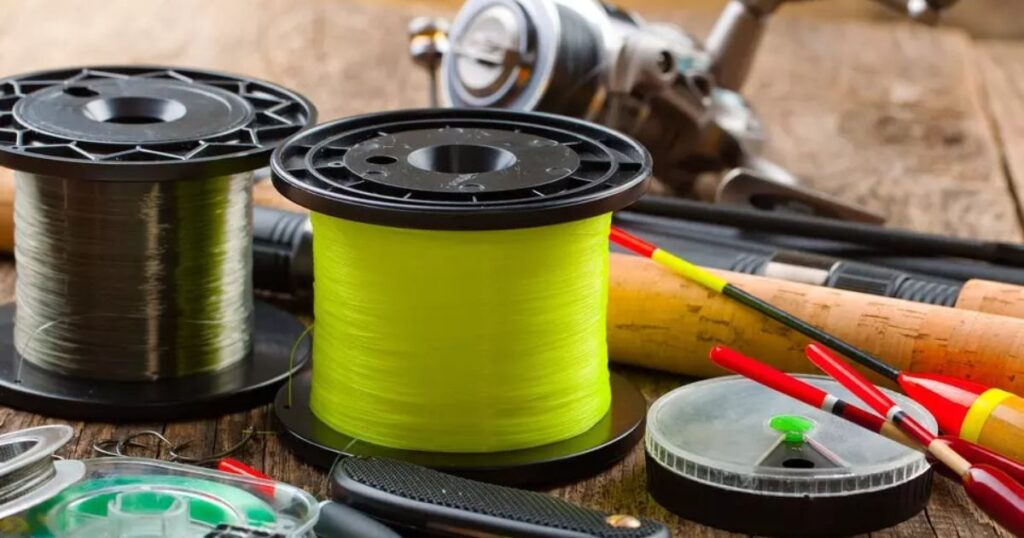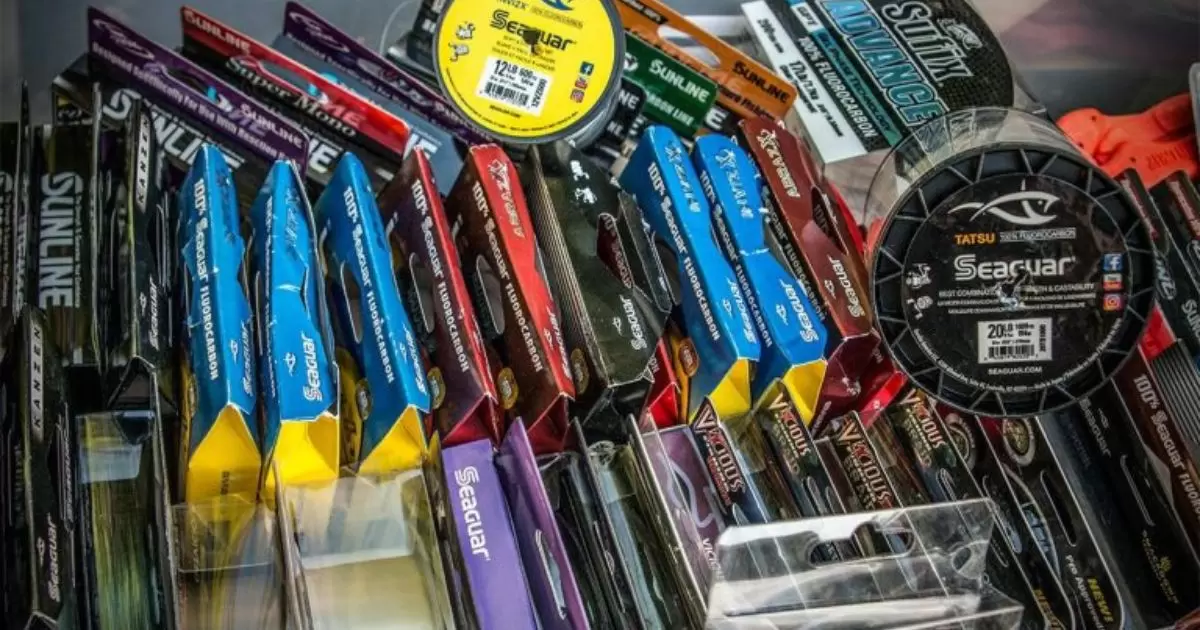Fishing enthusiasts know that choosing the right fishing line is a critical decision, and when it comes to pursuing the elusive bass, this decision becomes even more pivotal. Bass fishing requires a nuanced understanding of not just the equipment and techniques but also the importance of the fishing line, which serves as the vital link between you and your potential catch.
The fishing line is the unsung hero of any angler’s toolkit, a thin but resilient thread that connects you to the underwater world, transferring your commands and responding to the subtlest movements and strikes beneath the water’s surface. It’s the lifeline between you and the bass you’re trying to outsmart, making it a fundamental element of your fishing experience.
Choosing the right fishing line size for bass is crucial, impacting your success in landing prized bass. Factors like line strength, visibility, and sensitivity are key. In this article, we explore these intricacies, equipping you to excel in this exciting sport, whether you’re a pro or novice, increasing your chances of catching trophy bass.
Selecting the Appropriate Fishing Line Size
Selecting the appropriate fishing line size for bass is a critical decision for any angler. Your choice can significantly impact your success in reeling in those prized largemouth or smallmouth bass. In this comprehensive guide, we’ll explore the intricacies of choosing the right fishing line size for bass, considering factors such as line strength, visibility, and sensitivity. Whether you’re a seasoned pro or a novice angler, this information will help you maximize your chances of landing that trophy bass.
Line Strength The strength of your fishing line is perhaps the most critical factor. Bass can be quite powerful, and using a line that’s too light can result in snapped lines and lost fish. Typically, for bass fishing, a monofilament or fluorocarbon line with a test strength ranging from 10 to 20 pounds is suitable. If you’re targeting larger bass or fishing in heavy cover, consider a higher test strength line.
Visibility Bass are known for their sharp eyesight, so line visibility is an important consideration. Monofilament lines are less visible underwater due to their low light refraction, making them a good choice. Fluorocarbon lines are nearly invisible underwater, making them an excellent option for clear water conditions. Braided lines, while strong and sensitive, are more visible but can be used in heavy cover situations.
Sensitivity Sensitivity is crucial for detecting subtle bites. Braided lines offer excellent sensitivity due to their lack of stretch, allowing you to feel even the lightest nibble. Monofilament and fluorocarbon lines have some stretch, which can be an advantage when fighting the fish, but they may not transmit bites as well.
Durability Consider the fishing environment and potential abrasion. If you’re fishing around heavy cover or structure, you’ll need a more abrasion-resistant line. Fluorocarbon lines are known for their abrasion resistance, making them a good choice in such situations.
Casting Distance The diameter and weight of your fishing line can affect your casting distance. Thinner lines have less air resistance and can be cast farther. However, a balance must be struck between casting distance and line strength.
Water Conditions The clarity of the water you’re fishing in can also influence your line choice. In clear water, the visibility factor becomes more critical, while in murky water, you can use a heavier line with less worry about visibility.
Fishing Technique The type of fishing technique you prefer will also guide your line selection. For example, if you’re into finesse fishing, you may opt for a lighter, more sensitive line, while heavy cover flipping or frogging may require a more robust, abrasion-resistant line.
Choosing the Right Fishing Line Size
The right fishing line size for bass can vary based on your fishing style, location, and target species. Here are some general guidelines to help you select the appropriate line size.

Monofilament Monofilament lines are a versatile choice for bass fishing. A 10- to 12-pound test line is suitable for most situations. If you’re targeting larger bass, you can go up to 15-20 pounds. Lighter lines (6-8 pounds) are suitable for finesse techniques.
Fluorocarbon Fluorocarbon lines are nearly invisible underwater, making them an excellent choice for clear water. For general bass fishing, a 10- to 15-pound test fluorocarbon line is a good starting point. You can go heavier in heavy cover or clearer water.
Braided Braided lines offer incredible strength and sensitivity. A 30-50 pound test braid is ideal for general bass fishing. You may go lighter for finesse techniques or heavier for heavy cover applications. Note that many anglers use braided line as the mainline and tie on a fluorocarbon or monofilament leader to address visibility concerns.
Fishing Line Sizes for Bass Fishing
| Line Type | Recommended Test Strength (lbs) | Best Use Case |
| Monofilament | 10-20 | General bass fishing, light finesse, or larger bass |
| Fluorocarbon | 10-20 | Clear water conditions, general bass fishing |
| Braided | 30-50 | Strong, versatile, suitable for heavy cover |
In this table, you can easily compare the recommended test strengths for each line type and their best use cases. Remember that these are general guidelines, and your specific fishing conditions and preferences may warrant adjustments.
FAQs
What is the recommended fishing line size for bass beginners?
A good starting point for beginners is a 10-12 pound test monofilament line for general bass fishing.
How does water clarity affect the choice of fishing line size for bass?
In clear water, it’s best to use fluorocarbon lines (10-15 pounds), while in murky water, you can go with heavier monofilament or braided lines.
What’s the benefit of using braided line for bass fishing?
Braided lines (30-50 pounds) offer exceptional strength and sensitivity, making them versatile for various bass fishing techniques.
Should I always use the same fishing line size for bass, or should it vary based on the situation?
It’s advisable to adjust your line size based on the fishing conditions, the bass size you’re targeting, and your preferred fishing technique.
Can I use a combination of different fishing lines for bass fishing?
Yes, many anglers use braided line as the mainline and attach a fluorocarbon or monofilament leader to address visibility concerns in clear water situations.
Conclusion
Selecting the right fishing line size for bass is a critical component of your angling success. Factors such as line strength, visibility, and sensitivity all play a crucial role in determining the most suitable line for your needs. Consider your fishing environment, techniques, and the size of bass you’re targeting when making your decision. By doing so, you’ll increase your chances of landing that prized trophy bass and enjoying a successful day on the water. Whether you choose monofilament, fluorocarbon, or braided line, make sure it aligns with your unique fishing style and preferences.

